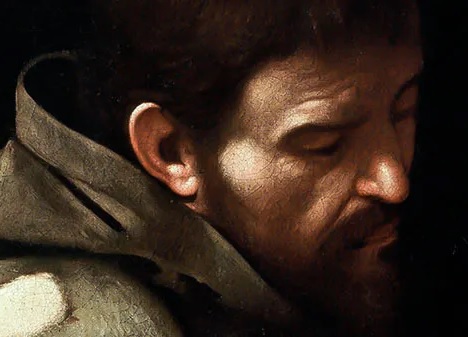Finding the body of St Francis
The holy founder of the three Franciscan Orders passed away in October 1226, and less than two years later, on July 16, 1228, Pope Gregory headed to Assisi to preside over the canonization of Saint Francis. The following day, this Pontiff laid the first stone of the Basilica dedicated to Saint Francis of Assisi, which still stands today.
In an article published in the Vatican daily L'Osservatore Romano (LOR) entitled "A discovery that put an end to legends", Bishop Felice Accrocca, historian and expert in Franciscan studies, details the account of what happened to the remains of Saint Francis since he died on October 3, 1226 until his rediscovery, on December 12, 1818, ending a series of legends spread among the faithful of that time.
Get this restored image, now on sale
When Francisco died, burying him in a cathedral was avoided since once doing so, it would have been very difficult to relocate his remains, especially when the project of the future Basilica for the saint already existed.
By the will of Gregory IX, this Basilica was subject only to the Roman Pontiff and was to be considered by the Franciscans as "head and mother." Fray Elías (from Cortona) was in charge of managing the entire operation with remarkable skill. This brother had been a companion of Francis who led the Franciscan order from 1221 as vicar, and then as general minister between 1232 and 1239.
On May 25, 1230, the remains of the saint were transferred from this Basilica that was dedicated to him, since the great fear in those cases was that the body could be damaged by the multitude eager to obtain any relic.
But the disorder of the transfer made the soldiers responsible for security isolate the vehicle in which the body of the saint was going, preventing access to the friars and also to the papal delegates, to then introduce the body into the church burying it in a place unknown to all.
This fact caused many legends to emerge over the centuries, leading some even to believe that, in the image of Christ, Francis had also risen. Others said they saw not a corpse, but an incorrupt body, standing up, as if it were alive.
Some sources say that a friar in charge of the construction of the basilica secretly sealed the remains in a part of the church to protect it from possible Saracen invaders. Other sources say that Francisco's body was not sealed until the 15th century to protect it from infighting between Italian families.
On one occasion, Cardinal Paolo Emilio Sfrondati ordered a search for the body, but the protests of the friars and faithful led Pope Paul V to sign a bull of protection on August 28, 1607.
Either way, in the 19th century, no one was quite sure where Francisco's body was, and no one had known for centuries.
In the early 1800s, Pope Pius VII gave local Catholics permission to search for the body. Pretty sure the body was somewhere in the basilica, the team removed part of the floor of the main church and found a series of iron bars, similar to what was common to protect tombs in the 13th century. After the entire area was excavated, under a large amount of rock and through a tunnel they found the intact remains of Sint Francis.
It was not until the second half of the seventeenth century that Constatino Suyskens, an expert who reviewed the reference to Saint Francis of Assisi in the second volume of the Acta sanctorum, who indicated exactly the place where it should be excavated, that is, under the main altar. of the lower basilica.
The Acta sanctorum or Acts of the Saints is a complete text on the saints prepared by Jesuits known as the Bollandists, a name that came from the priest who founded this group of scholars, the Belgian Jean Bolland.
The search for the body, which seemed unattainable, was resumed in 1806, when the general minister of the ofm, Nicola Papini, with the help of some friars, drove in the most absolute secrecy, working at night and hiding all traces of the works and the new excavation. However, the advance of the Napoleonic troops in the territory of the Papal State stopped the work and caused everything to be postponed.
In 1818 and after the final fall of Napoleon and his troops, work was resumed under the guidance of Giuseppe Maria de Bonis. After a first and unsuccessful attempt, the excavation was again made in the direction Nicola Papini had indicated and, finally - on December 12 - the remains of the saint were found.
What was found was not an uncorrupted or standing body, but simply the bones of a person who had suffered, in short, the remains of a man of flesh and blood who had made Christ his reason for living.
The body of Saint Francis was moved to a public crypt within the basilica in Assisi, open to pilgrims for veneration. This discovery of the body of the saint is commemorated in the order by a special service on December 12.





Comments
Post a Comment